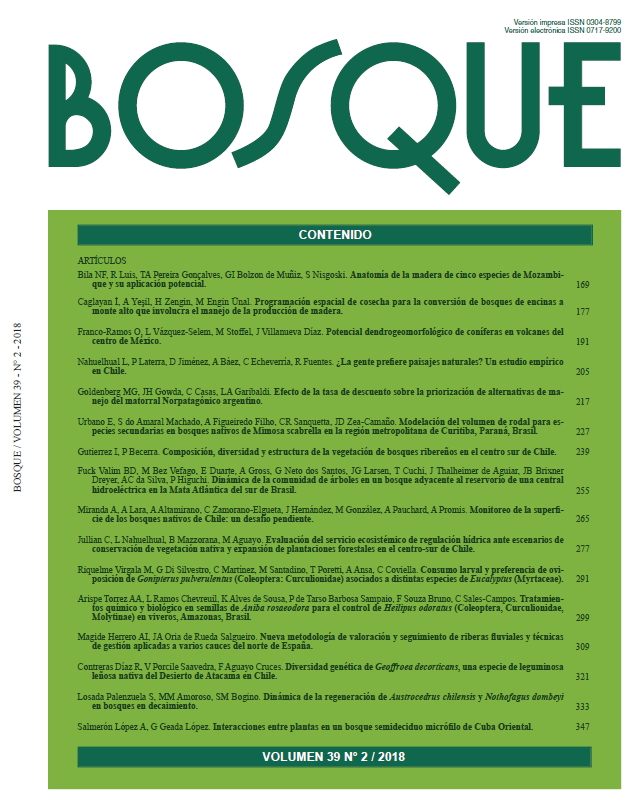Wood anatomy of five species from Mozambique and its potential application
Main Article Content
Abstract
Wood trade is strongly dependent on global economic conditions. In Africa, the market for tropical wood also has dynamic changes. In Mozambique, the international demand for wood comes mainly from emerging economies such as China and India. Almost 70 % of the country is still covered by forests and other woody vegetation. There are many species with favorable properties for wood commerce, although, at present, this is restricted to a few species. We analyzed the wood anatomy of Acacia nigrescens, Combretum imberbe, Icuria dunensis, Pericopsis angolensis and Sterculia appendiculata and comment about properties and potential use based on their anatomical composition. In general, the species presented wood diffuse pores, simple perforation plates, alternate intervessel pits, deposits in vessels; abundant axial parenchyma; multiseriate rays, very thick-walled fibers and mineral inclusions. Based on
anatomical characteristics, the studied species have great potential for use in panels industry, furniture, floor, structures and craftwork.

